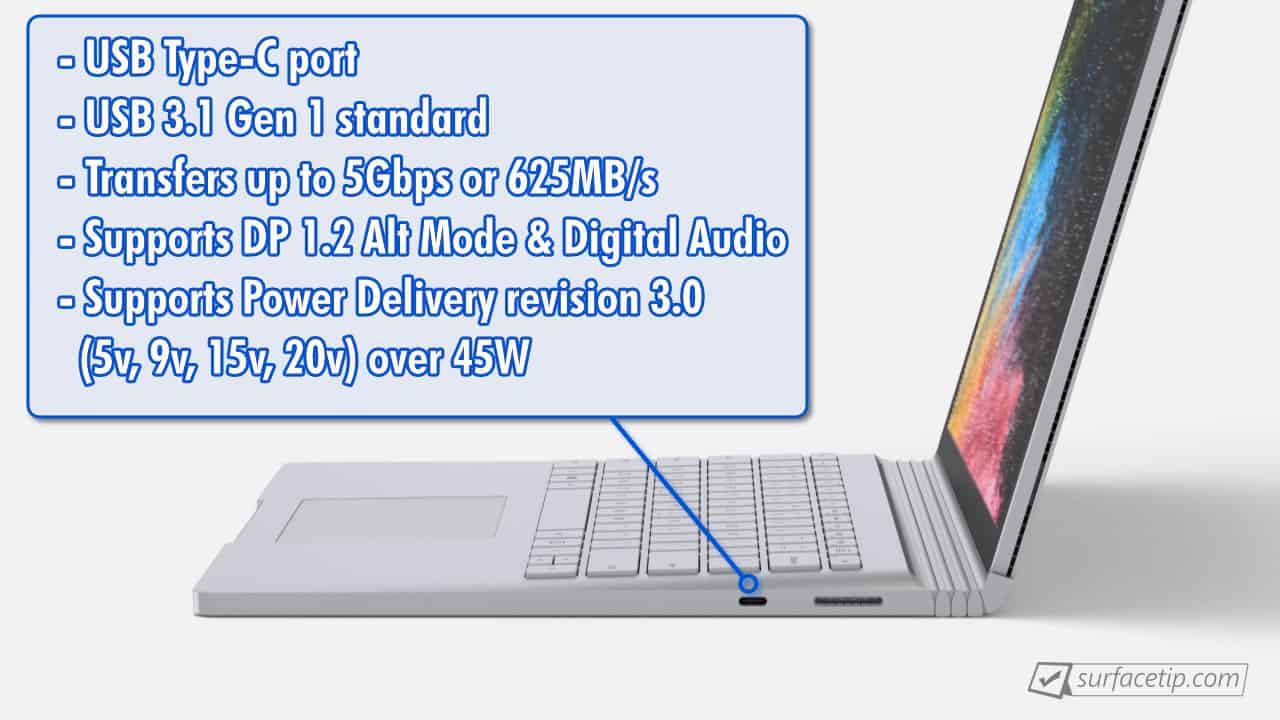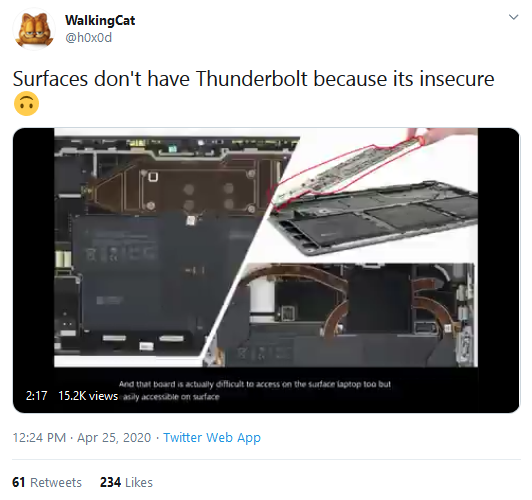
.png)
The dock has an integrated mounting slot and a lock slot easily for firmly secure and protects your dock at the same time.

The dock can deliver up to 90W of power to charge your Microsoft Surface at full speed. It also has a Gigabit Ethernet port, an SD card reader, a headset jack, a USB 2.0 port, three USB 3.2 Gen 2, a power port with a 180W power adapter included in the box. Moreover, the dock can also output dual 4K displays at 60Hz or a single with its three available Thunderbolt™️ 4 downstream.


The dock also comes with Intel Vt-d DMA protection that will block peripheral devices from unauthorized access to your Microsoft Surface system memory. Kensington worked directly with Microsoft to provide professional-level connectivity for working seamlessly with all Microsoft Surface devices with Thunderbolt™️ 4 enabled. That makes sense, as you would be able to have full speed USB ports instead of leftover bandwidth that's sharing the USB cable's display port alternate mode.First Thunderbolt™️ 4 Dock Designed Exclusively for Surfaceįree yourself from any headaches with the first Thunderbolt™️ 4 dock that is designed for Surface. Looking at the manual for your monitor, it looks like the USB-B port is driven off of the USB connection to the monitor, but that the USB-A ports rely on the Thunderbolt controller in the monitor. A lot of times, this means only certain USB ports will work on the dock, maybe the NIC won't work, maybe it limits the amount of displays that can be connected. Sometimes the thunderbolt peripheral has the ability to run limited portions of the device by USB to help make it compatible. Those host controllers then control internal and external USB ports that the docks features are hung off of, like USB ports, Network interfaces, SD Card readers etc. A lot of times, manufacturers put multiple USB host controllers inside of thunderbolt docks that run off of the PCIe lanes. That means the peripheral has some sort of PCIe controller that turns the pcie lanes into something the peripheral needs. With Thunderbolt to Thunderbolt, PCIe lanes are transferred over the cable. With USB to USB, the device is expected to operate with some sort of controller on the peripheral side that turns USB into what the peripheral needs. I'm confused, are you saying that it doesn't work? Or that it does work? Thunderbolt 3 and USB can be cross compatible, but it's best to go in with the mindset that a Thunderbolt port can always talk to a USB peripheral, but a USB port can't necessarily talk to a Thunderbolt peripheral.


 0 kommentar(er)
0 kommentar(er)
